Corporate Accounting Project: Impairment and Consolidation
VerifiedAdded on 2022/11/23
|14
|921
|414
Project
AI Summary
This assignment is a comprehensive project on corporate accounting, focusing on impairment of assets and consolidation. Part I involves an analysis of Ezy Manufacturing Ltd's investments in Range Pty Ltd and SWL, requiring the student to address specific accounting questions related to these entities. The assignment delves into the concepts of impairment testing, including the valuation of goodwill and other intangible assets, and the impact of discount rates. Part II focuses on impairment testing, exploring its process, application to tangible and intangible assets, and the impact of revaluation. The project examines impairment testing, the value of goodwill, and the effects of amortization and impairment on financial reporting. It also addresses the reversal of impairment and relevant accounting standards, such as IAS 36. The solution also includes journal entries and a consolidation worksheet. The assignment is based on Chapter 25 of Deegan's Financial Accounting, 8th edition.
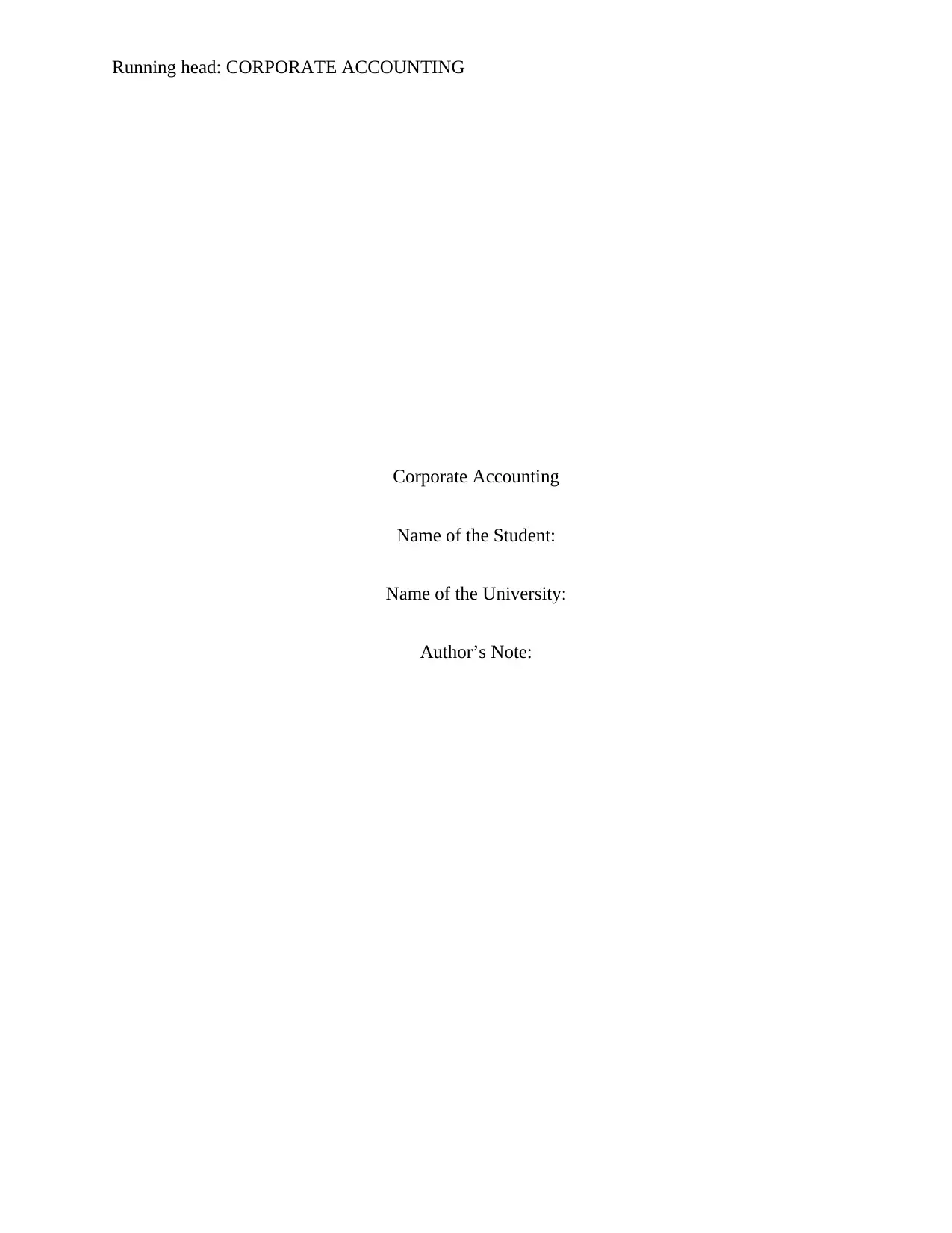
Running head: CORPORATE ACCOUNTING
Corporate Accounting
Name of the Student:
Name of the University:
Author’s Note:
Corporate Accounting
Name of the Student:
Name of the University:
Author’s Note:
Paraphrase This Document
Need a fresh take? Get an instant paraphrase of this document with our AI Paraphraser
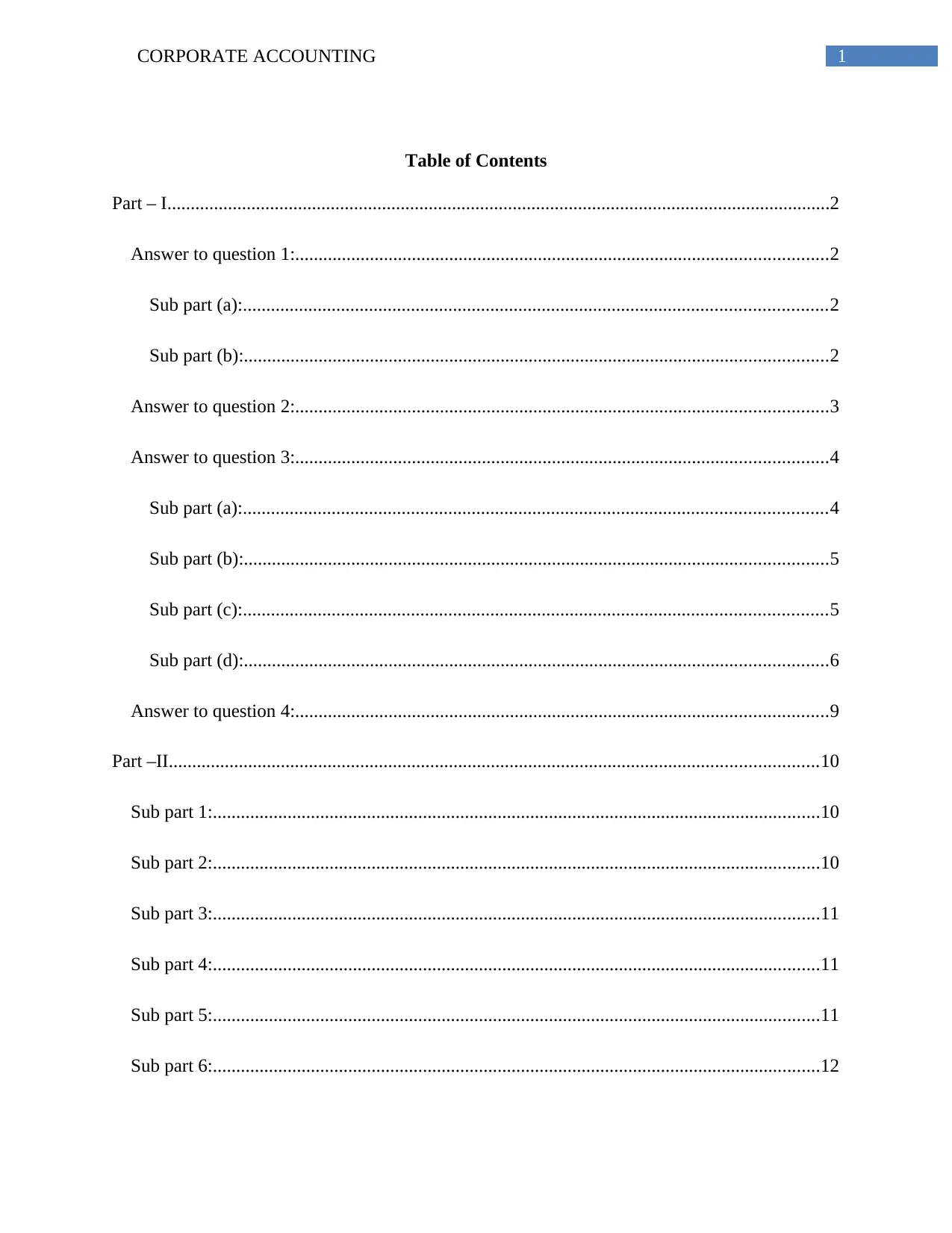
1CORPORATE ACCOUNTING
Table of Contents
Part – I..............................................................................................................................................2
Answer to question 1:..................................................................................................................2
Sub part (a):.............................................................................................................................2
Sub part (b):.............................................................................................................................2
Answer to question 2:..................................................................................................................3
Answer to question 3:..................................................................................................................4
Sub part (a):.............................................................................................................................4
Sub part (b):.............................................................................................................................5
Sub part (c):.............................................................................................................................5
Sub part (d):.............................................................................................................................6
Answer to question 4:..................................................................................................................9
Part –II...........................................................................................................................................10
Sub part 1:..................................................................................................................................10
Sub part 2:..................................................................................................................................10
Sub part 3:..................................................................................................................................11
Sub part 4:..................................................................................................................................11
Sub part 5:..................................................................................................................................11
Sub part 6:..................................................................................................................................12
Table of Contents
Part – I..............................................................................................................................................2
Answer to question 1:..................................................................................................................2
Sub part (a):.............................................................................................................................2
Sub part (b):.............................................................................................................................2
Answer to question 2:..................................................................................................................3
Answer to question 3:..................................................................................................................4
Sub part (a):.............................................................................................................................4
Sub part (b):.............................................................................................................................5
Sub part (c):.............................................................................................................................5
Sub part (d):.............................................................................................................................6
Answer to question 4:..................................................................................................................9
Part –II...........................................................................................................................................10
Sub part 1:..................................................................................................................................10
Sub part 2:..................................................................................................................................10
Sub part 3:..................................................................................................................................11
Sub part 4:..................................................................................................................................11
Sub part 5:..................................................................................................................................11
Sub part 6:..................................................................................................................................12

2CORPORATE ACCOUNTING
Bibliography:.................................................................................................................................13
Part – I
Answer to question 1:
Sub part (a):
Sub part (b):
Bibliography:.................................................................................................................................13
Part – I
Answer to question 1:
Sub part (a):
Sub part (b):
⊘ This is a preview!⊘
Do you want full access?
Subscribe today to unlock all pages.

Trusted by 1+ million students worldwide
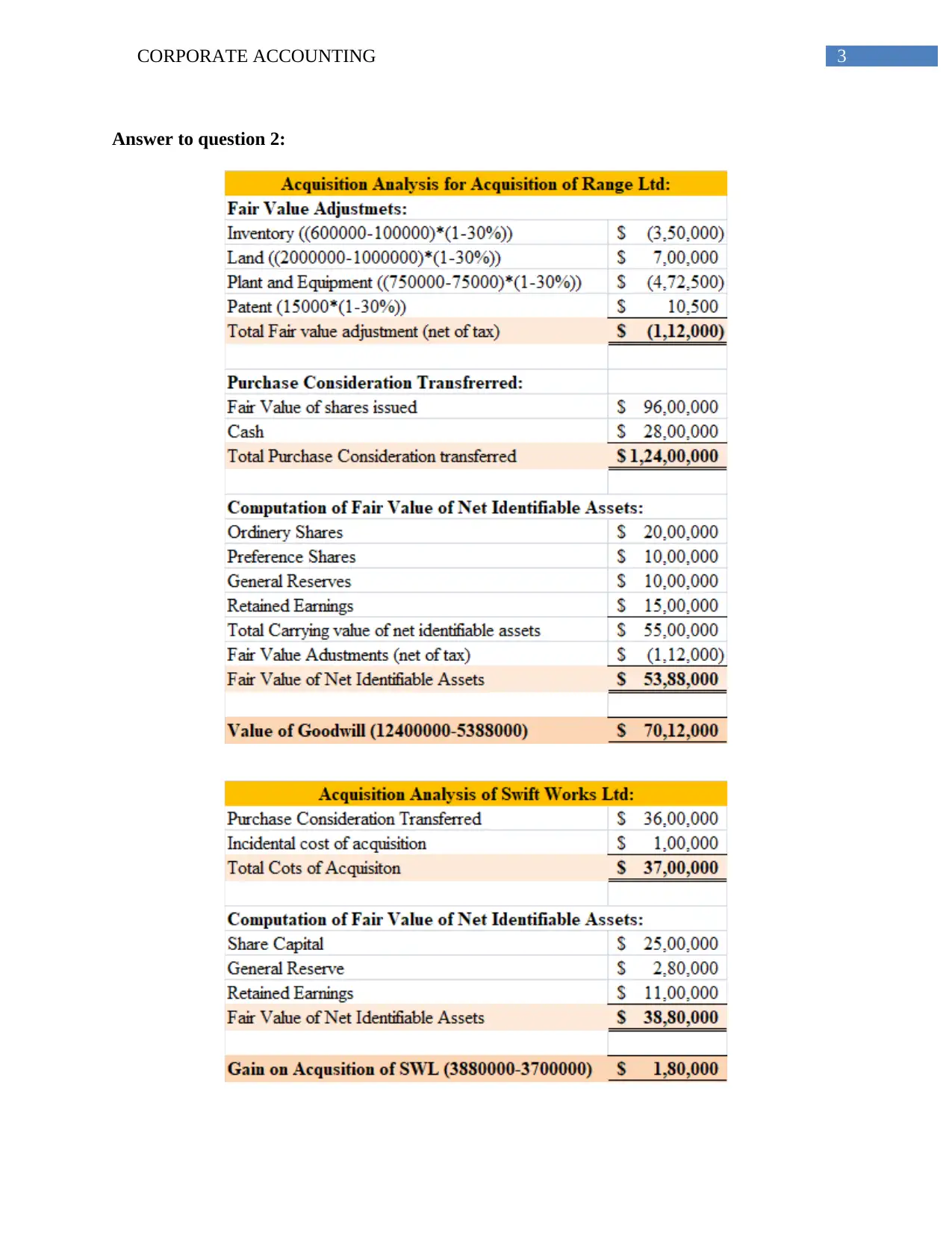
3CORPORATE ACCOUNTING
Answer to question 2:
Answer to question 2:
Paraphrase This Document
Need a fresh take? Get an instant paraphrase of this document with our AI Paraphraser
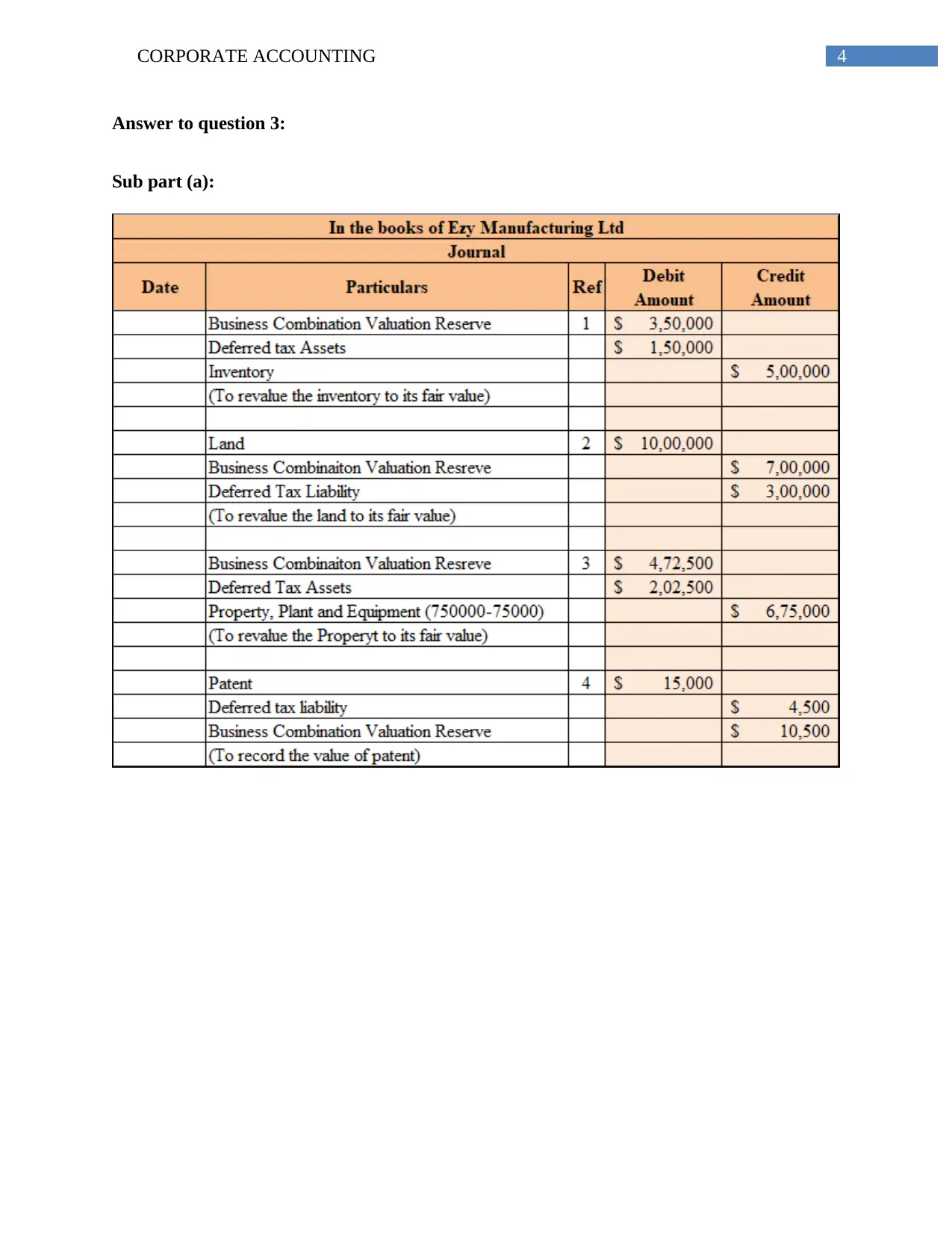
4CORPORATE ACCOUNTING
Answer to question 3:
Sub part (a):
Answer to question 3:
Sub part (a):

5CORPORATE ACCOUNTING
Sub part (b):
Sub part (c):
Sub part (b):
Sub part (c):
⊘ This is a preview!⊘
Do you want full access?
Subscribe today to unlock all pages.

Trusted by 1+ million students worldwide
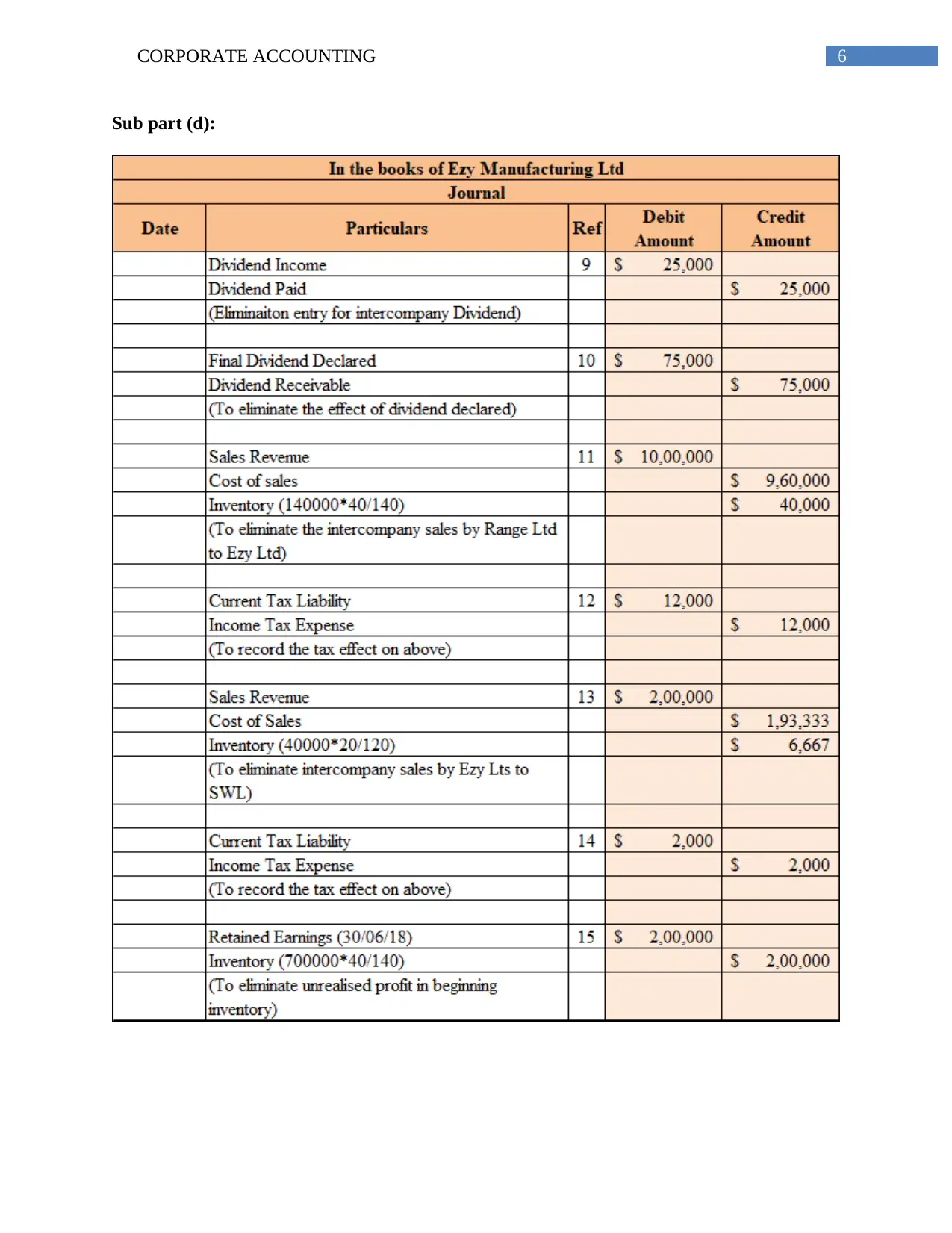
6CORPORATE ACCOUNTING
Sub part (d):
Sub part (d):
Paraphrase This Document
Need a fresh take? Get an instant paraphrase of this document with our AI Paraphraser

7CORPORATE ACCOUNTING
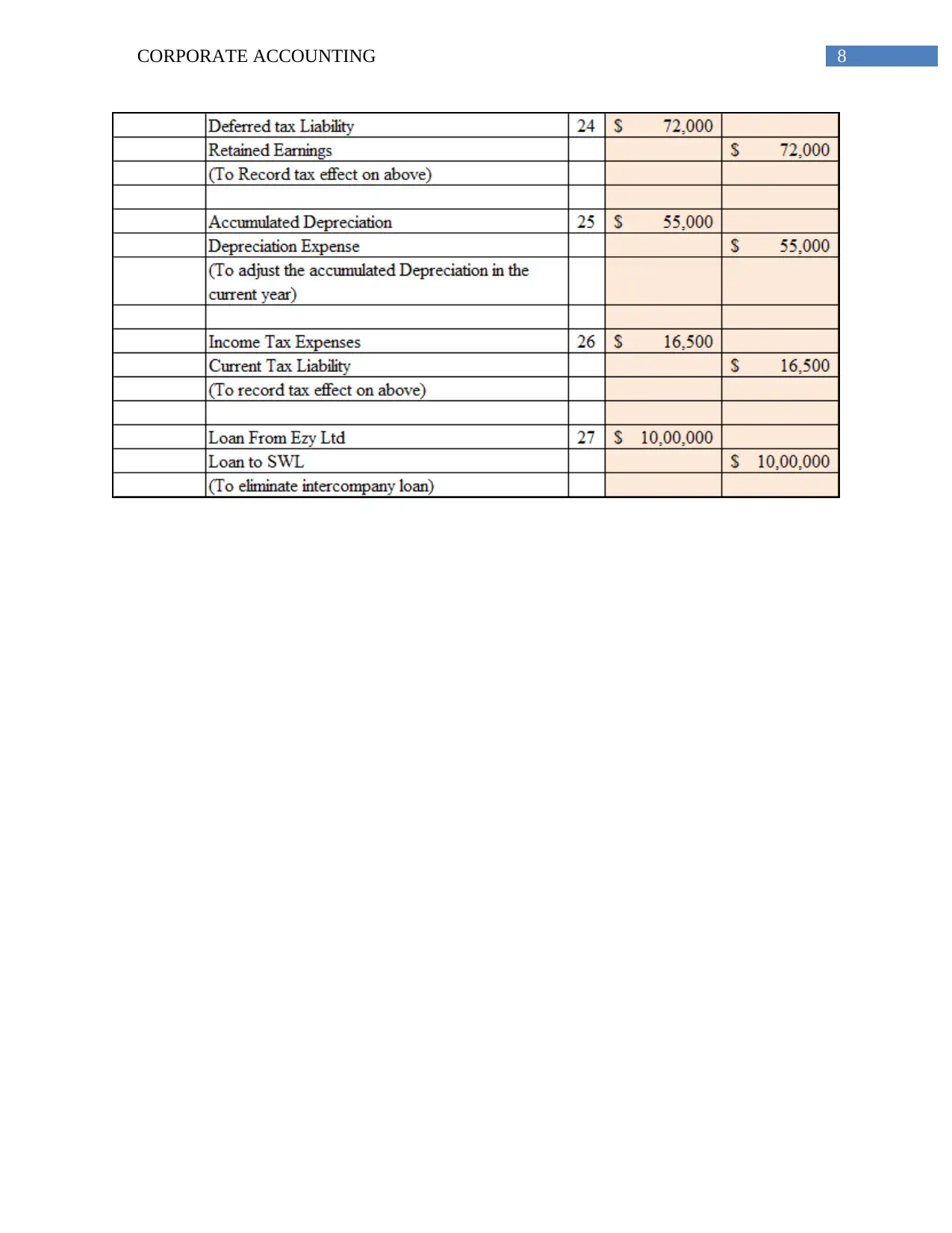
8CORPORATE ACCOUNTING
⊘ This is a preview!⊘
Do you want full access?
Subscribe today to unlock all pages.

Trusted by 1+ million students worldwide

9CORPORATE ACCOUNTING
Answer to question 4:
Answer to question 4:
Paraphrase This Document
Need a fresh take? Get an instant paraphrase of this document with our AI Paraphraser

10CORPORATE ACCOUNTING
Part –II
Sub part 1:
Impairment testing is the process of evaluation the assets and liabilities in terms of their
fair market value. It applies for both the tangible and intangible assets. Generally assets and
liabilities are recorded in the books of account at their historical costs when those assets were
acquired. At the present time the value of those assets may not be the same as it is recorded in
the books of accounts. Hence, to ascertain the present value or the net realizable value of an asset
and to show the true and correct financial position of a company the impairment testing is
necessary. It helps an organization to ascertain the true value of the assets and to disclose it in the
financial statement of the company1.
Sub part 2:
Impairment testing is the process of ascertaining the actual value or the net realizable
value of any tangible or intangible assets. Assets are generally recorded in the books of accounts
at their historical costs, but later on due to inflation or any other effect the value of assets may
increase or decrease. Those effects of increase or decrease in value of assets must be given in the
books of accounts. While conducting an impairment testing, the carrying value of assets might be
lower than the actual or the net realizable value of the asset. If such situation arises, the
difference is the surplus in revaluation and it must be treated properly in the books of accounts,
the respective assets account is to be debited and the assets revaluation gain or the assets
revaluation surplus is to be credited2. If the reverse situation arises then there would be a loss on
revaluation and the necessary entry to adjust the los must be given. Hence, as a result of the
1 Martina K. Linnenluecke et al, "Planetary Boundaries: Implications For Asset Impairment" (2015)
55(4) Accounting & Finance.
2 Kirsten Ely and Gregory Waymire, "Intangible Assets And Stock Prices In The Pre-SEC Era" (1999) 37 Journal of
Accounting Research.
Part –II
Sub part 1:
Impairment testing is the process of evaluation the assets and liabilities in terms of their
fair market value. It applies for both the tangible and intangible assets. Generally assets and
liabilities are recorded in the books of account at their historical costs when those assets were
acquired. At the present time the value of those assets may not be the same as it is recorded in
the books of accounts. Hence, to ascertain the present value or the net realizable value of an asset
and to show the true and correct financial position of a company the impairment testing is
necessary. It helps an organization to ascertain the true value of the assets and to disclose it in the
financial statement of the company1.
Sub part 2:
Impairment testing is the process of ascertaining the actual value or the net realizable
value of any tangible or intangible assets. Assets are generally recorded in the books of accounts
at their historical costs, but later on due to inflation or any other effect the value of assets may
increase or decrease. Those effects of increase or decrease in value of assets must be given in the
books of accounts. While conducting an impairment testing, the carrying value of assets might be
lower than the actual or the net realizable value of the asset. If such situation arises, the
difference is the surplus in revaluation and it must be treated properly in the books of accounts,
the respective assets account is to be debited and the assets revaluation gain or the assets
revaluation surplus is to be credited2. If the reverse situation arises then there would be a loss on
revaluation and the necessary entry to adjust the los must be given. Hence, as a result of the
1 Martina K. Linnenluecke et al, "Planetary Boundaries: Implications For Asset Impairment" (2015)
55(4) Accounting & Finance.
2 Kirsten Ely and Gregory Waymire, "Intangible Assets And Stock Prices In The Pre-SEC Era" (1999) 37 Journal of
Accounting Research.
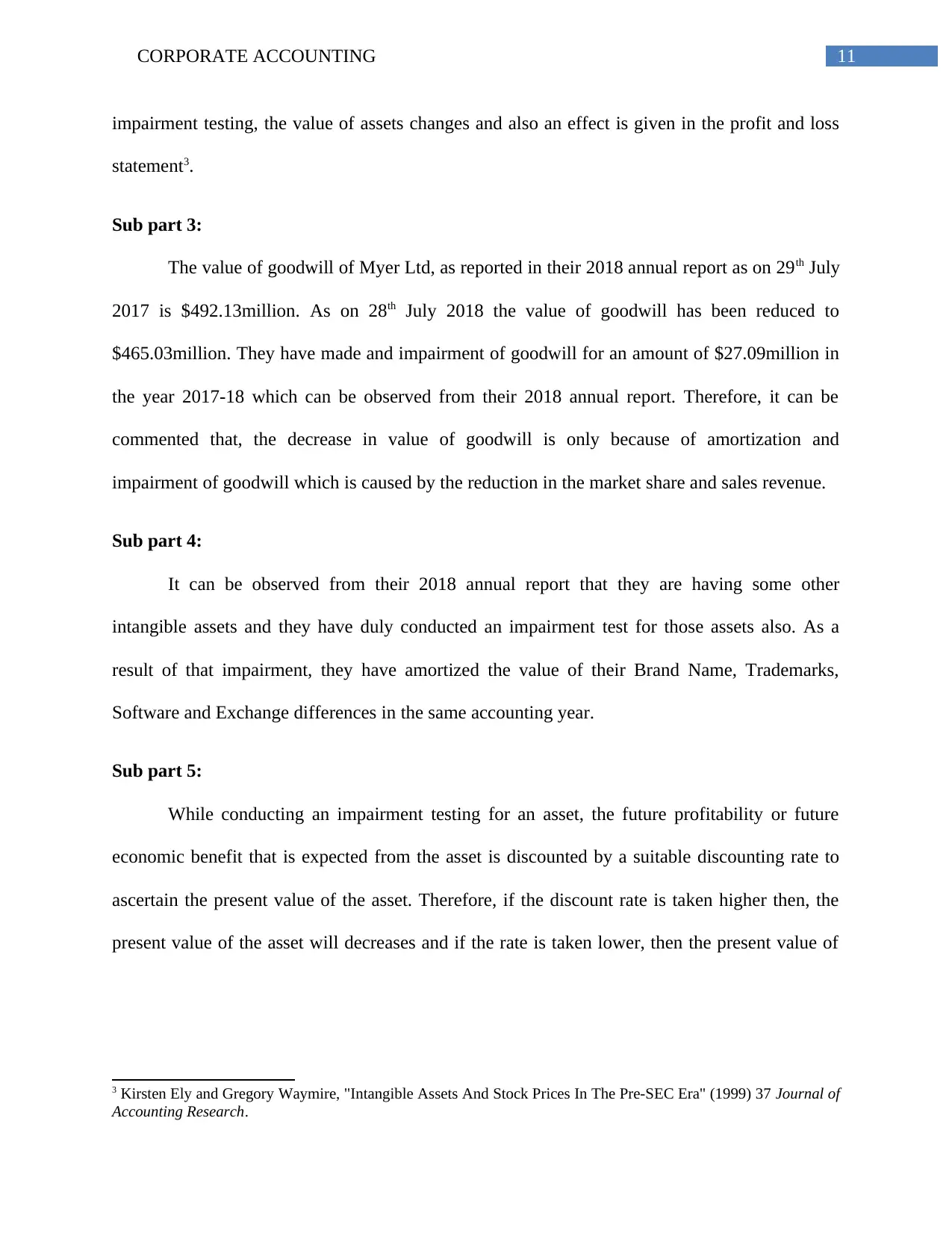
11CORPORATE ACCOUNTING
impairment testing, the value of assets changes and also an effect is given in the profit and loss
statement3.
Sub part 3:
The value of goodwill of Myer Ltd, as reported in their 2018 annual report as on 29th July
2017 is $492.13million. As on 28th July 2018 the value of goodwill has been reduced to
$465.03million. They have made and impairment of goodwill for an amount of $27.09million in
the year 2017-18 which can be observed from their 2018 annual report. Therefore, it can be
commented that, the decrease in value of goodwill is only because of amortization and
impairment of goodwill which is caused by the reduction in the market share and sales revenue.
Sub part 4:
It can be observed from their 2018 annual report that they are having some other
intangible assets and they have duly conducted an impairment test for those assets also. As a
result of that impairment, they have amortized the value of their Brand Name, Trademarks,
Software and Exchange differences in the same accounting year.
Sub part 5:
While conducting an impairment testing for an asset, the future profitability or future
economic benefit that is expected from the asset is discounted by a suitable discounting rate to
ascertain the present value of the asset. Therefore, if the discount rate is taken higher then, the
present value of the asset will decreases and if the rate is taken lower, then the present value of
3 Kirsten Ely and Gregory Waymire, "Intangible Assets And Stock Prices In The Pre-SEC Era" (1999) 37 Journal of
Accounting Research.
impairment testing, the value of assets changes and also an effect is given in the profit and loss
statement3.
Sub part 3:
The value of goodwill of Myer Ltd, as reported in their 2018 annual report as on 29th July
2017 is $492.13million. As on 28th July 2018 the value of goodwill has been reduced to
$465.03million. They have made and impairment of goodwill for an amount of $27.09million in
the year 2017-18 which can be observed from their 2018 annual report. Therefore, it can be
commented that, the decrease in value of goodwill is only because of amortization and
impairment of goodwill which is caused by the reduction in the market share and sales revenue.
Sub part 4:
It can be observed from their 2018 annual report that they are having some other
intangible assets and they have duly conducted an impairment test for those assets also. As a
result of that impairment, they have amortized the value of their Brand Name, Trademarks,
Software and Exchange differences in the same accounting year.
Sub part 5:
While conducting an impairment testing for an asset, the future profitability or future
economic benefit that is expected from the asset is discounted by a suitable discounting rate to
ascertain the present value of the asset. Therefore, if the discount rate is taken higher then, the
present value of the asset will decreases and if the rate is taken lower, then the present value of
3 Kirsten Ely and Gregory Waymire, "Intangible Assets And Stock Prices In The Pre-SEC Era" (1999) 37 Journal of
Accounting Research.
⊘ This is a preview!⊘
Do you want full access?
Subscribe today to unlock all pages.

Trusted by 1+ million students worldwide
1 out of 14
Related Documents
Your All-in-One AI-Powered Toolkit for Academic Success.
+13062052269
info@desklib.com
Available 24*7 on WhatsApp / Email
![[object Object]](/_next/static/media/star-bottom.7253800d.svg)
Unlock your academic potential
Copyright © 2020–2025 A2Z Services. All Rights Reserved. Developed and managed by ZUCOL.





